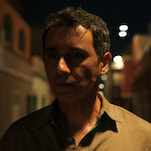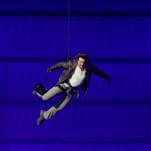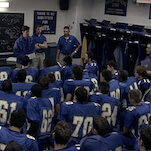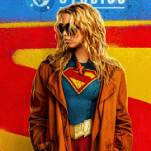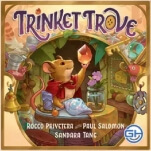In 1985, gaming tried—and failed—to come to terms with Stephen King
King has dominated almost every artistic medium of the 20th and 21st centuries. The Mist explains why gaming is the rare exception.
Photo: Mindscape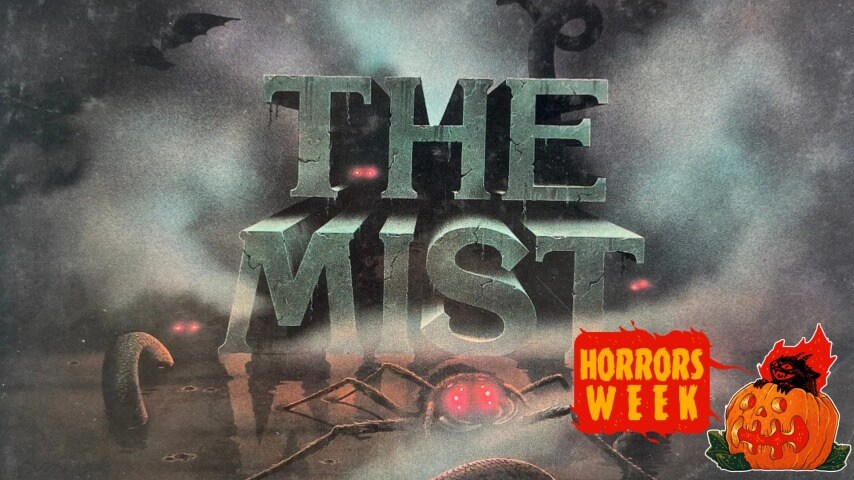
Stephen King is one of the most adapted authors on the planet, with huge chunks of his prodigious output having been churned up, reworked, and then ultimately extruded as movies, TV shows, comic books, and more. There’s really only been one exception to the gluttonous way that King’s inventive plots and compelling, slightly folksy prose have been devoured by non-native artistic mediums over the decades: Video games, which have always kept the master author at a mildly indifferent remove. (A mutual one, if Uncle Stevie’s writings about games in his old Entertainment Weekly column are anything to go off of.) There have been efforts to adapt, but only sporadically: A run-and-gun platformer based on the film version of Bachman Book The Running Man here, an adventure game loosely based on The Dark Half there, the ridiculous “Slap Steve’s name on it and ship the sucker off” goofiness of minigame collection F13: The Function Of Fear sitting on an eternally ignored Office Max spinner rack over there. (Ah, F13: The “game” that dared to ask, “What if your keyboard had a 13th function key… of terror?!”) Absolutely none of these games had any interest in wrestling, in any meaningful way, with King’s actual strengths and weaknesses as an author, and how those might be applied to an interactive medium—except one. The first one. The Mist.
This is not an apologia for Angelsoft’s 1985 text adventure The Mist, which is not a good game by either the standards of our time, or its own. (Replaying it this week, I was baffled to be reminded that it was contemporaneous with Infocom’s A Mind Forever Voyaging, a game that demolishes it on both an artistic and a technological level.) Presented entirely in text, the game is both simplistic and clunky, demanding players navigate its ransacked grocery store and ravaged city streets not just through text prompts, but ones so fussy that they’d put the original novella’s minor villain Brent Norton to shame. This is a text parser that will all but call you an asshole for typing “search Dumpster” into it, because it’s actually waiting for “look at Dumpster closely”—no adverb, no love. And yet, as the very first video game to adapt King—and one of the only ones to directly incorporate parts of his prose—it remains a fascinating look at why his themes might sit so ill at ease with the realm of interactive entertainment.
It’s worth noting that King’s 1980 novella was nobody’s first choice for adaptation: When approached by Angelsoft founder (and fellow author) Mercer Mayer about possible game rights, King (then a decade into his career as literature’s “King Of Horror”) simply explained that basically every other work he’d published up to that point had already been optioned for film. On the surface, though, it wasn’t a terrible fit: The novella, published in short story collection Skeleton Crew, has the loose structure of an adventure story. (Even if that’s mostly in place so that King can set his “heroes” up to fail at every turn.) It has clear, present dangers to battle. And it has all sorts of ugly pressures and ticking clocks to bring to bear on a player, from the hordes of creatures roaming the titular fog, to the steadily winding cuckoo clocks in their fellow survivor’s heads. The Mist, as written, is a swiftly brewing recipe for disaster. Why not use it as a template for a horror game?
And there are moments of playing the game—which has been archived in the Internet Archive, for the curious—where its efforts to adapt King undeniably work. Walking through the grocery store (navigating screen by screen by typing “north,” “south,” “east,” “west,” etc. into the interface), the tension is palpable. Walk into the store’s meat locker, and you’ll be confronted with the hanging corpses of soldiers from the mysterious Project Arrowhead, having somehow impaled themselves on meat hooks to get out of this world while the getting was good. Step into the store’s storage area, and you’ll be treated to the sight of poor, dumb Norm the bagboy getting dragged to his death by a massive, suction cup-covered tentacle. And that’s to say nothing of what can happen when you go outside yourself, where you’re certain to swiftly encounter the gigantic, otherworldly “bugs” and “birds” that populated King’s Mist. Meet one without the proper tools already on hand, and you’ve already signed your death warrant: The creature will block your exit, then proceed to messily murder you with methods culled straight from the many deaths in King’s writing, before the game “reassures” you that “The nightmare is over, for now…”











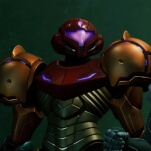
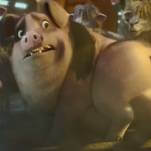
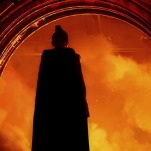

![HBO teases new Euphoria, Larry David, and much more in 2026 sizzle reel [Updated]](https://img.pastemagazine.com/wp-content/avuploads/2025/12/12100344/MixCollage-12-Dec-2025-09-56-AM-9137.jpg)


